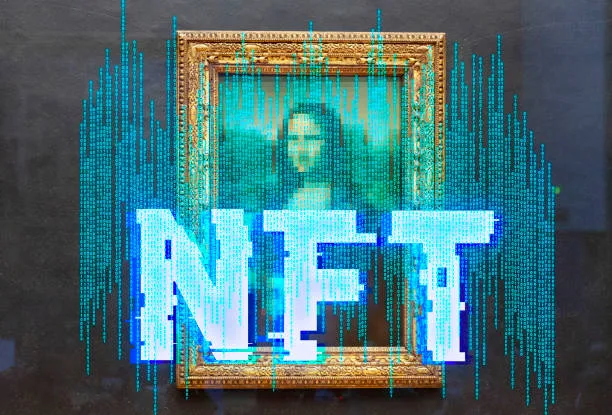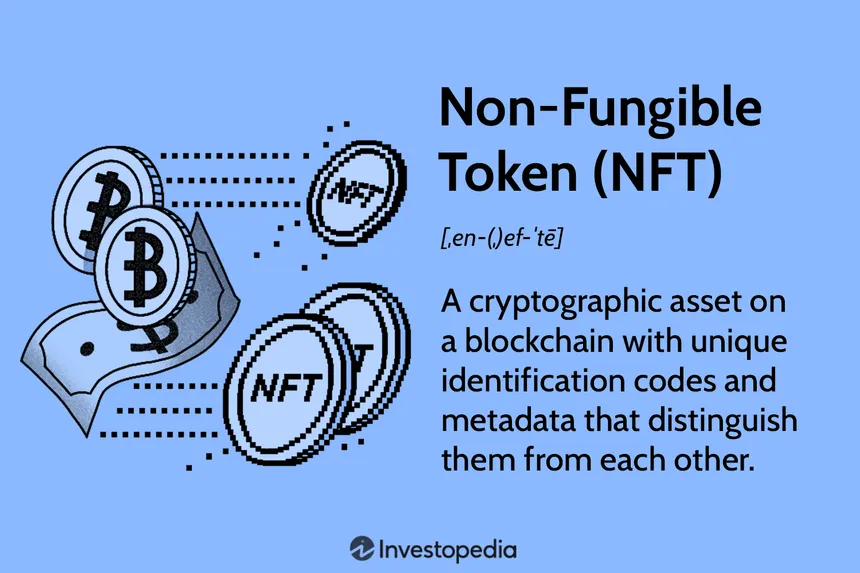What is an NFT? Unlocking the Digital Revolution of Non-Fungible Tokens
 Ayan
Ayan
In recent years, NFTs (Non-Fungible Tokens) have exploded in popularity, particularly in the world of art, entertainment, and collectibles. But what exactly are NFTs, and why are they creating so much buzz? In this article, we’ll explore the concept of NFTs, how they work, and why they are considered a revolutionary part of the digital economy.
Defining NFTs: What Does "Non-Fungible" Mean?
An NFT is a unique digital asset that represents ownership or proof of authenticity of a specific item or piece of content on the blockchain. The term "non-fungible" means that the item cannot be exchanged on a one-to-one basis with another item because each NFT is unique or has distinct characteristics that make it different from others.
To put it simply, NFTs are like digital certificates of authenticity for online items, whether it's a piece of artwork, music, video, or even virtual real estate.

How Do NFTs Work?
NFTs are built on blockchain technology, the same underlying system that supports cryptocurrencies like Bitcoin and Ethereum. The blockchain acts as a decentralized, transparent ledger where each NFT’s details are recorded—such as its ownership, transaction history, and metadata.
Minting: The process of creating an NFT is called "minting." It involves turning a digital file (like an image, video, or music file) into a unique token that can be bought, sold, or traded. This is done by creating a smart contract on the blockchain.
Blockchain Platforms: Ethereum is the most widely used blockchain for NFTs, but other blockchains like Binance Smart Chain, Solana, and Flow also support NFTs.
Ownership and Provenance: When you purchase an NFT, you’re not buying the physical item itself (e.g., the digital artwork), but rather a unique token that proves your ownership of the digital file linked to the item. The blockchain records this ownership, ensuring that it's verifiable and transparent.
Why Are NFTs Valuable?
NFTs gain value due to their uniqueness and the scarcity of the digital asset they represent. Just like in the physical world, limited edition items (such as rare baseball cards or fine art) are often more valuable because of their rarity and desirability. NFTs are also valuable because they offer:
Provenance: Ownership of an NFT is recorded on the blockchain, providing an immutable history of transactions that proves its authenticity.
Creator Empowerment: Many NFTs are created by artists, musicians, and creators who can retain ownership rights over their work and receive royalties every time their NFT is resold. This creates new revenue streams for creators.
Exclusivity: NFTs can represent exclusive access to content, events, or experiences. For example, owning an NFT could give you special access to virtual events or early access to limited-edition products.
Types of NFTs
NFTs are used to represent a variety of digital assets, including:
Digital Art: The most common use of NFTs, where digital artists sell their artwork as unique tokens. Famous examples include works by Beeple and Cryptopunks.
Music and Videos: Musicians and videographers are also minting NFTs to sell their music and videos as unique assets. The value here comes from ownership rights, special access, or collectible value.
Collectibles: Digital trading cards, in-game assets, and collectibles have also become popular NFTs. For example, NBA Top Shot allows fans to buy and sell officially licensed NBA highlights as NFTs.
Virtual Real Estate: Some virtual worlds, like Decentraland or Cryptovoxels, allow users to buy, sell, and trade virtual properties, all represented by NFTs.
Domain Names: NFTs are also used to represent ownership of digital domain names, which can be bought, sold, or traded.
NFT Marketplaces
To buy, sell, and trade NFTs, collectors and creators turn to dedicated NFT marketplaces. Some of the most popular platforms include:
OpenSea: The largest and most popular marketplace for buying and selling NFTs.
Rarible: A decentralized marketplace where users can mint and trade NFTs.
SuperRare: An exclusive platform for high-end digital art NFTs.
Foundation: A marketplace known for digital art, focusing on limited edition releases.
These platforms typically allow users to connect their cryptocurrency wallets (like Meta Mask) to facilitate transactions.
NFT Use Cases
NFTs have a wide range of potential use cases, from digital art to gaming and beyond. Here are some examples:
Art and Collectibles: Artists are using NFTs to sell their digital artwork and collectibles, offering a way to profit directly from their creations.
Gaming: In video games, NFTs can represent in-game assets, such as skins, weapons, or even entire virtual worlds, allowing players to buy, sell, and trade items.
Real Estate: Virtual real estate is becoming a hot commodity in virtual worlds like Decentral and The Sandbox, where users can buy land, build structures, and even monetize virtual experiences.
Identity and Access: NFTs can represent personal identity, credentials, or exclusive access to content, services, or events, such as concerts or meet-and-greets.
The Controversy and Criticism of NFTs
Despite their popularity, NFTs have been met with some criticism, especially concerning environmental concerns and speculative behavior.
Environmental Impact: The process of minting and transacting NFTs on energy-intensive blockchains like Ethereum has raised concerns about the environmental impact, as it contributes to high energy consumption and carbon emissions.
Speculation and Bubble Concerns: The rapid rise in NFT prices has led some to believe that the market is driven by speculation and could eventually lead to a bubble. Critics argue that some NFT buyers may be overvaluing assets that may not have lasting value.
The Future of NFTs
While the NFT market is still relatively new, it’s clear that NFTs have the potential to revolutionize industries like art, gaming, music, and more. As technology evolves, we may see NFTs play an even larger role in digital ownership, creator rights, and virtual economies. Moreover, with the development of more energy-efficient blockchain technologies (such as Ethereum's transition to Proof of Stake), the environmental concerns may lessen over time.
Conclusion
NFTs represent a new era in the way we think about ownership, creativity, and digital assets. By enabling creators to monetize their work and providing collectors with verifiable ownership of digital items, NFTs are transforming the art, entertainment, and technology landscapes. While there are still many questions and challenges, NFTs are undeniably paving the way for new forms of digital interaction and economic opportunity.
Subscribe to my newsletter
Read articles from Ayan directly inside your inbox. Subscribe to the newsletter, and don't miss out.
Written by

Ayan
Ayan
"I post blogs here in a simple way, so that a 5-year-old can read and understand them."